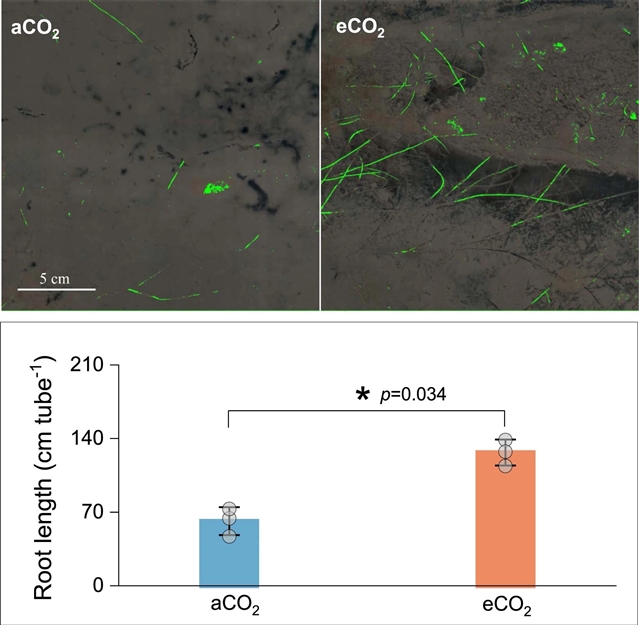
中国科学院土壤研究所朱春梧课题组报道了大气CO2富集对土壤中磷的有效性的影响。2023年1月19日出版的《自然—地球科学》杂志发表了这项成果。
课题组展示了两个长期(15年和9年)水稻无空气二氧化碳富集实验的磷浓度的测量结果。虽然在试验的第一年没有观察到变化,但到试验结束时,土壤有效磷含量下降了20%以上(15年和9年分别为26.9%和21.0%)。研究人员认为,这种减少可以通过土壤有机磷的产生来解释,这些土壤有机磷不是以植物容易获得的形式存在的,也可以通过作物收获时清除量的增加来解释。
研究结果进一步表明,在人为改变环境的条件下,植物有效磷从生物、生物化学和化学磷转移的增加不足以补偿长期暴露于高浓度二氧化碳下植物有效磷的减少。研究小组估计,尽管磷肥污染的全球风险可能会降低,但在未来的二氧化碳影响下,如果不投入额外的磷肥来补偿,低收入国家的水稻产量下降可能尤其严重。
研究人员表示,磷是植物代谢和生长所必需的元素,但在大气二氧化碳水平升高的情况下,磷的未来供应仍不确定。
附:英文原文
Title: Reduced phosphorus availability in paddy soils under atmospheric CO2 enrichment
Author: Wang, Yu, Huang, Yuanyuan, Song, Lian, Yuan, Jiahui, Li, Wei, Zhu, Yongguan, Chang, Scott X., Luo, Yiqi, Ciais, Philippe, Peuelas, Josep, Wolf, Julie, Cade-Menun, Barbara J., Hu, Shuijin, Wang, Lei, Wang, Dengjun, Yuan, Zengwei, Wang, Yujun, Zhang, Jishuang, Tao, Ye, Wang, Shenqiang, Liu, Gang, Yan, Xiaoyuan, Zhu, Chunwu
Issue&Volume: 2023-01-19
Abstract: Phosphorus is an essential element for plant metabolism and growth, but its future supply under elevated levels of atmospheric CO2 remains uncertain. Here we present measurements of phosphorus concentration from two long-term (15 and 9 years) rice free air carbon dioxide enrichment experiments. Although no changes were observed in the initial year of the experiments, by the end of the experiments soil available phosphorus had declined by more than 20% (26.9% and 21.0% for 15 and 9 years, respectively). We suggest that the reduction can be explained by the production of soil organic phosphorus that is not in a readily plant-available form, as well as by increased removal through crop harvest. Our findings further suggest that increased transfers of plant available phosphorus from biological, biochemical and chemical phosphorus under anthropogenic changes are insufficient to compensate for reductions to plant available phosphorus under long-term exposure to elevated CO2. We estimate that reductions to rice yields could be particularly acute in low-income countries under future CO2 scenarios without the input of additional phosphorus fertilizers to compensate, despite the potentially reduced global risk for phosphorus pollution.
DOI: 10.1038/s41561-022-01105-y
Source: https://www.nature.com/articles/s41561-022-01105-y
